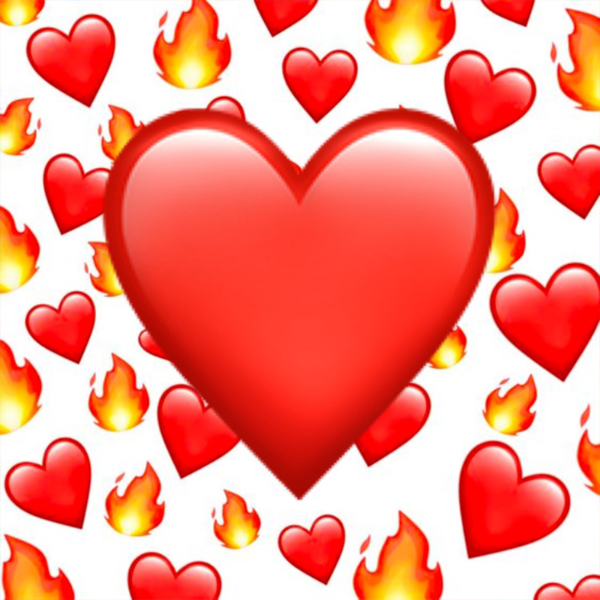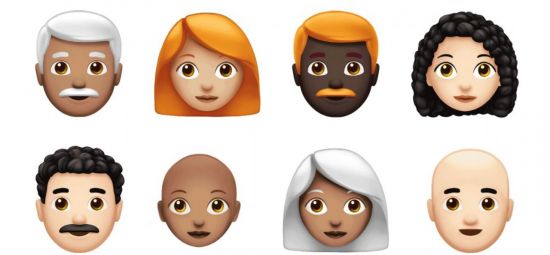With the widespread adoption of smartphones and the emergence of various messenger apps and social networking services (SNS), the use of emojis in text messages has significantly increased. Emojis, which allows for the simple expression of various concepts in daily life, quickly gained popularity due to their convenience. Now they have become an almost universal language that is unimaginable in a world without them. In fact, according to the 'Global Emoji Trend Report' released by Adobe in July 2021, about two-thirds of the total respondents felt comfortable using emojis for communication. In the digital environment where a small period or exclamation mark can have a significant impact on conveying emotions and understanding situations, emojis have become the hottest language, adding expressiveness to rigid text. In today's conversation with CAH, let's take a closer look at emojis one by one.

Emoji: A Hieroglyph of the 21st Century
In previous Korean generations, accessing emoticons was more common, so the concept of emojis may still be unfamiliar. One of the most confusing distinctions is between the concepts of "Emoji" and "Emoticon." First, an emoticon is a symbol that represents emotions by combining individual characters, such as "^^," "ㅠㅠ," ":)," and is a compound word of "emotion" and "icon." However, an emoji is a pictorial character created to represent a directive or concept as a single image. In other words, an emoji is a kind of pictorial character where one image icon corresponds to one symbol. Therefore, , “:)” can be considered an emoticon, while can be understood as an emoji. Emoji, as pictorial characters, serves a distinct linguistic function, allowing anyone to easily understand its meaning and conveying a clearer concept than traditional emoticons. Many people use emojis primarily to express things that cannot be conveyed through letters and words alone. Just as our ancestors invented ideograms, pictographs, and other characters to express abstract concepts, modern humanity uses emojis in the digital environment to economically express complex emotions.

Emojis Reflecting Culture
Why Are There Many Japanese Culture Points in Emoji?
When you open a text app, you may notice that there are a significant number of emojis depicting elements of Japanese culture. For example, while there may not be emojis representing Korean hanboks or Chinese qipaos, traditional Japanese garments like kimonos are present. Additionally, you might come across images of traditional Japanese dolls and flags shaped like koi streamers (鯉のぼり). The reason behind this lies in the history of emojis. The modern form of emojis originated in 1999 when Shigetaka Kurita developed them for the Japanese telecommunications company NTT Docomo. The term 'emoji' itself is derived from the Japanese word '絵文字 (emōji),' where '絵 (e)' means picture, and '文字 (moji)' means character. In its early stages, emojis were relatively simple and comprised only a small set of around 176 images. However, with the introduction of emoji keyboards by Apple starting from iOS 5 in 2011, users from other countries began actively incorporating emojis into their communication. Thanks to this trend, emojis became a means of global digital communication.

Emojis as Indicators of Social Trends
The use of emojis has become a entrenched convention, but emojis themselves continue to evolve and expand each year. In fact, until 2016, emojis representing occupations like female police officers or male beauticians did not exist on emoji keyboards. Google proposed new emojis to the Unicode Consortium for gender equality. Subsequently, Apple also suggested Gender Neutral Emojis, allowing us to use diverse forms of emojis that are not tied to gender. Additionally, while humanoid characters were initially represented with a single skin tone, now there are options for selecting from five different skin tones. Emojis have evolved to reflect societal changes, incorporating images of same-sex couples, robotic arms, and individuals in electric wheelchairs. Emojis, in this regard, serve as forward-looking elements, but conversely, they also act as indicators of human footsteps. For instance, during the COVID-19 era, emojis representing viruses and syringes saw a significant increase in usage. By examining the currently popular emojis, one can gain insights into contemporary topics and issues more easily.
Emoji can be a Brand Identity
Emojis are generally standardized through Unicode[1], but their designs may vary slightly depending on the web browser, device, or platform. While Apple tends to lead in the world of emojis, there are noticeable design differences in emojis across major platforms and brands such as Facebook, Google, and Samsung. For instance, Apple tends to create relatively realistic emojis, aligning with their early adoption of skeuomorphism.[2] This design philosophy, emphasizing realistic representations, influenced Apple's initial approach to emojis. In contrast, Twemoji, provided by Twitter (now known as Twitter Design or X), opts for a completely flat design, excluding gradients and three-dimensional effects, resulting in a cuter and more simplified impression. Samsung's Emogi Suite, introduced in 2015, has been emphasized for its rich expressiveness. For example, in smiling faces, the size of the eyes is enlarged to emphasize a lively impression, and in worried-looking faces, things like sweat are exaggerated. In 2022, the Korean mobile financial platform company Toss announced 'Toss Space' and released 3,600 emojis for free distribution. They stated that these emojis were created to enhance the accessibility of the concept of 'finance' using a visual language that anyone can understand. 'Toss Space' focuses on minimalistic depictions, using only basic shapes of the same form for intuitive interpretation. Notably, all emojis face to the right, following the natural flow of the gaze.

In today's world, text communication has become so prevalent that it goes beyond the dimension of "writing" and resembles a common face-to-face conversation. In modern society where online communication has explosively increased, emojis are often designated as elements that not only represent subtle emotional states, but even characterize distinctive tones of speech. In today's world, text communication has become so prevalent that it goes beyond the dimension of "writing" and often resembles a common face-to-face conversation. In modern society where online communication has explosively increased, emojis are often designated as elements that not only represent subtle emotional states, but even characterize distinctive tones of speech. Therefore, emojis serve as a means to bring face-to-face-like communication and wit into our stark digital environment. With new emojis being introduced every year, there is a sense of curiosity about what emojis will emerge in the future, and we look forward to the continued growth of emojis in diversity.
Why not send a message filled with affection to your close friend tonight using emojis? ❤️
[1] Unicode is a new concept code system that provides unique code values for each character, regardless of the operating system or language in use. It is a code system developed to represent all languages worldwide, accommodating the need to express languages from different countries.
[2] It means designing to mimic the user's experience.

